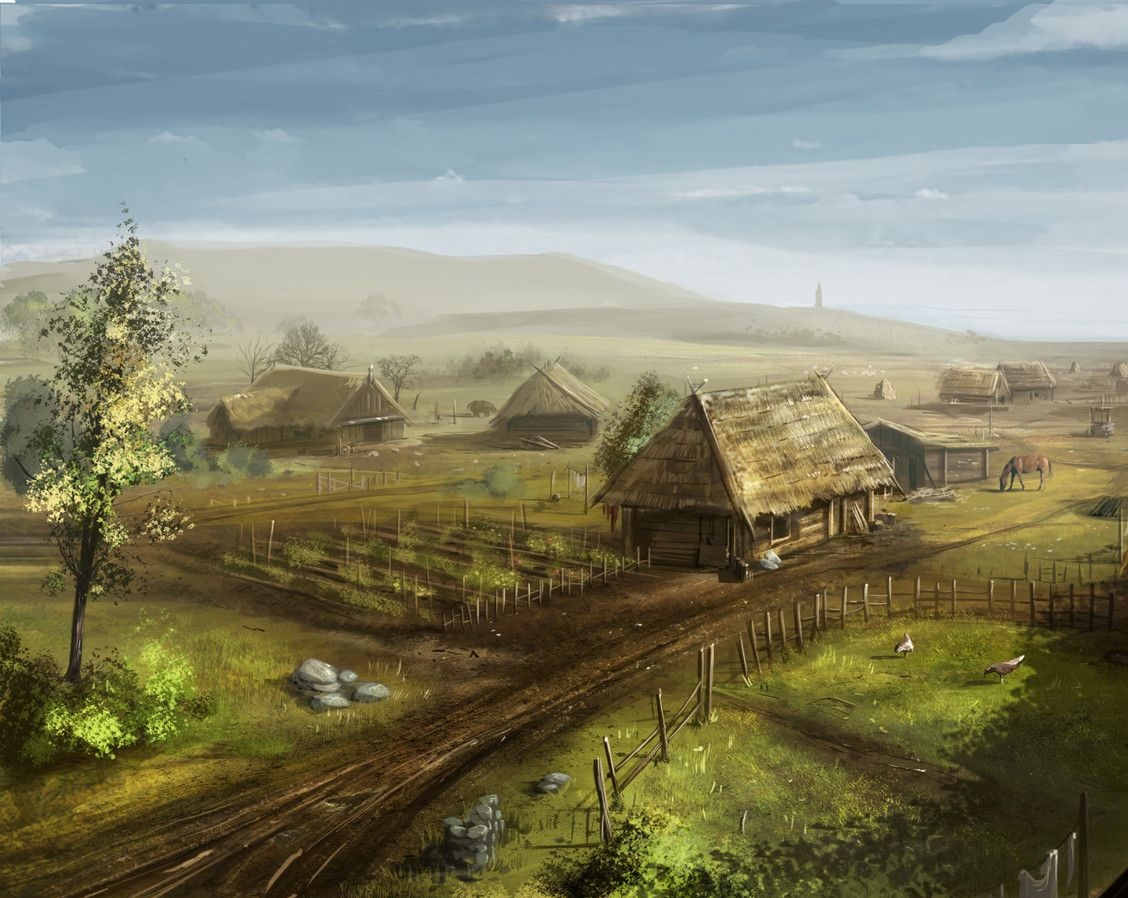Difference between revisions of "Thorp"
Tao alexis (talk | contribs) |
Tao alexis (talk | contribs) |
||
| Line 25: | Line 25: | ||
If the number is low, most will be adults; if high, most will be children. Services are as like to be provided by parent and offspring, siblings or married couples. Those of the gristmill live in the building; the goader and dock overseer will live in small hovels. The garner and sawyer's hovels are likely larger than average. The sawyer's house should incorporate wooden features into the hovel's design. | If the number is low, most will be adults; if high, most will be children. Services are as like to be provided by parent and offspring, siblings or married couples. Those of the gristmill live in the building; the goader and dock overseer will live in small hovels. The garner and sawyer's hovels are likely larger than average. The sawyer's house should incorporate wooden features into the hovel's design. | ||
| + | |||
| + | == Occurrence == | ||
| + | Thorps occur within any rural area, and may even be semi-attached to villages or towns. They appear in complete isolation only in [[Type-7 Hex|type-7 hexes]], where 1 [[Hammer (symbol)|hammer symbol]] is present. Because the thorp exists largely to move the goods of the sawyer or those of a farmer to market, it's an absolutely needed [[Facilities|facility]] ... but it's size and relative unimportance draws little oversight. Occasionally a [[Tax Farmer|tax farmer]] might visit, but it's likely the land's ownership is uncertain or in the hands of those ready to ignore the thorp's existence. | ||
| + | |||
| + | |||
| + | See [[The Adventure]] | ||
Revision as of 22:01, 5 December 2022
A thorp is a tiny group settlement providing minimal specialised labour for agricultural farmlands. The basis of prosperity depends upon the collection and transhipping of base materials such as food produce, wood and stone. The habitat is solely economic, existing without political dependence; the inhabitants consist entirely of free persons. It's hardly governed, as the institution takes no part in providing group services, collecting taxes or otherwise maintaining any part except their personal holdings.
Population
| Buildings | Population |
|---|---|
| boat dock & hovel | 1-3 |
| farmhouse & virgate | d6+1 |
| garner & hovel | 2d4-1 |
| gristmill | d4+d6-1 |
| ox tether & hovel | 1 or 2-3 |
| saw pit & hovel | 1d3+1d4+2 |
A thorp is sure to include a garner and water well, with at least one hovel. A second hovel, attached to an adjacent virgate-sized farm, is likely to exist. This accounts for 3-14 people. If no road better than a cart path exists, then there's sure to be ox tether, allowing 4-17 people.
If the thorp is located in woodland or other ranges with trees, woodcutting and the use of a saw pit are important trades, greatly increasing the population to 8-26 people. And if there's a river of sufficient size (2 pts.), the thorp will have a boat dock and a gristmill, enabling a population of 10-38.
If the number is low, most will be adults; if high, most will be children. Services are as like to be provided by parent and offspring, siblings or married couples. Those of the gristmill live in the building; the goader and dock overseer will live in small hovels. The garner and sawyer's hovels are likely larger than average. The sawyer's house should incorporate wooden features into the hovel's design.
Occurrence
Thorps occur within any rural area, and may even be semi-attached to villages or towns. They appear in complete isolation only in type-7 hexes, where 1 hammer symbol is present. Because the thorp exists largely to move the goods of the sawyer or those of a farmer to market, it's an absolutely needed facility ... but it's size and relative unimportance draws little oversight. Occasionally a tax farmer might visit, but it's likely the land's ownership is uncertain or in the hands of those ready to ignore the thorp's existence.
See The Adventure
